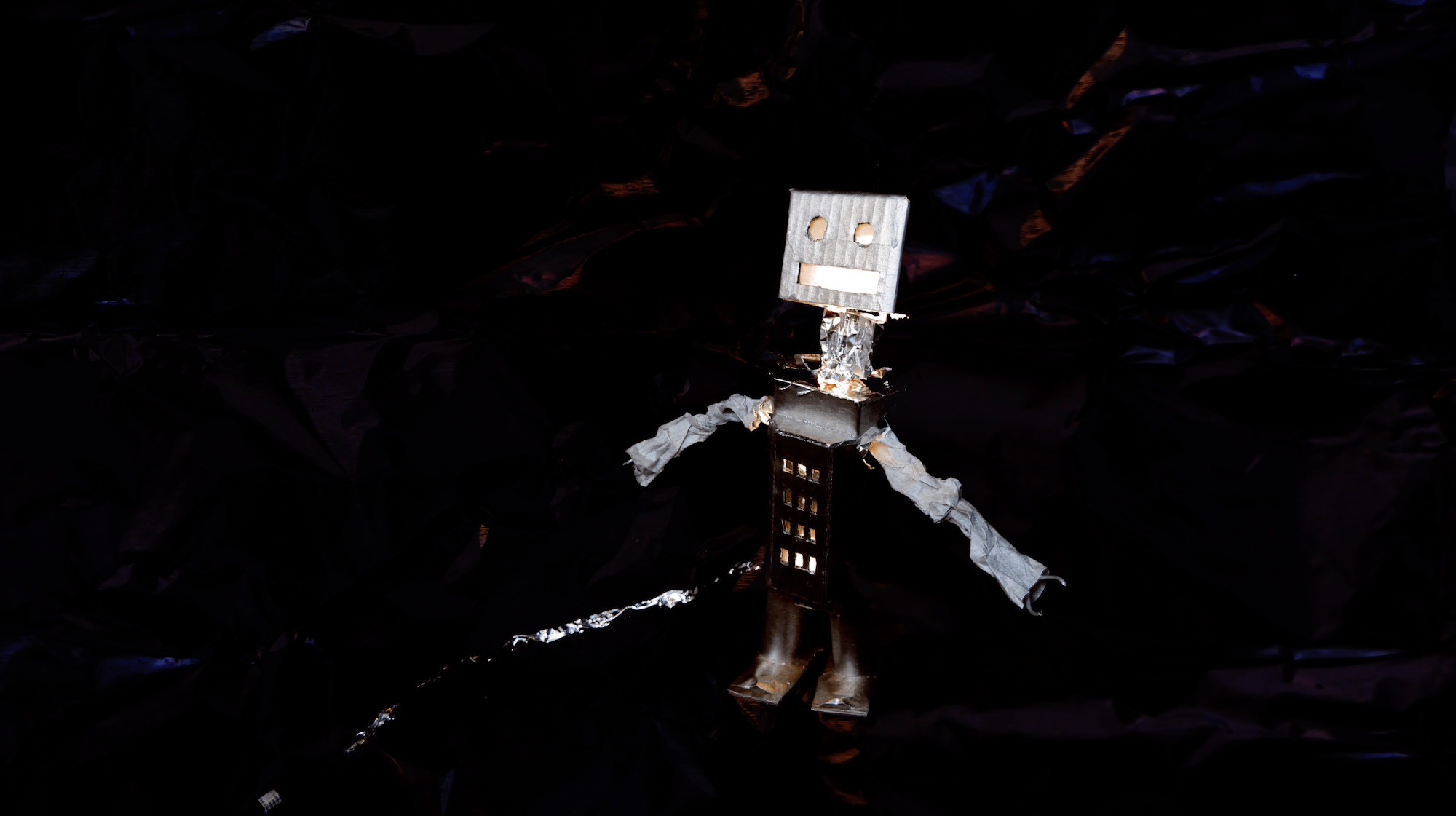
Beginning life as a film about his days playing competitive tennis as a 12yr old with a temper before morphing into a deeply personal self-portrait inspired by a grandparent he never knew, Case Jernigan’s eggshell is a complex piece (both aesthetically and thematically). Eager to break down the thought process behind his intriguing short and provide a little insight into his filmmaking approach, we spoke to Jernigan about the genesis of his film and the process of bringing it to life.
I’ve just rewatched eggshell for a 2nd time, trying to narrow down exactly what I want to ask you about the film and I’m almost overwhelmed by it as a piece (in a good way) – it has really set my mind racing. When you made it, how were you hoping someone would react to it?
I had no idea how people would react. I didn’t know what I thought either. I hoped it would excite people. I make everything myself, artwork, sound, music, editing, so I don’t bounce ideas off of anyone. This is both a blessing and a curse. It can lead to revelatory personal moments but also unmoored interior drifting.
I wanted the core idea of honesty and vulnerability to shine out.
I worried that eggshell was too straightforward, then I found it too abstract and wished I’d used an earlier script. When it was 90% finished I showed it to my wife Cassandra and my friend Josh, two people who know my intentions well. They seemed moved, so I felt like I had found something true. I wanted the core idea of honesty and vulnerability to shine out and inspire people to feel empathy for those who are struggling.

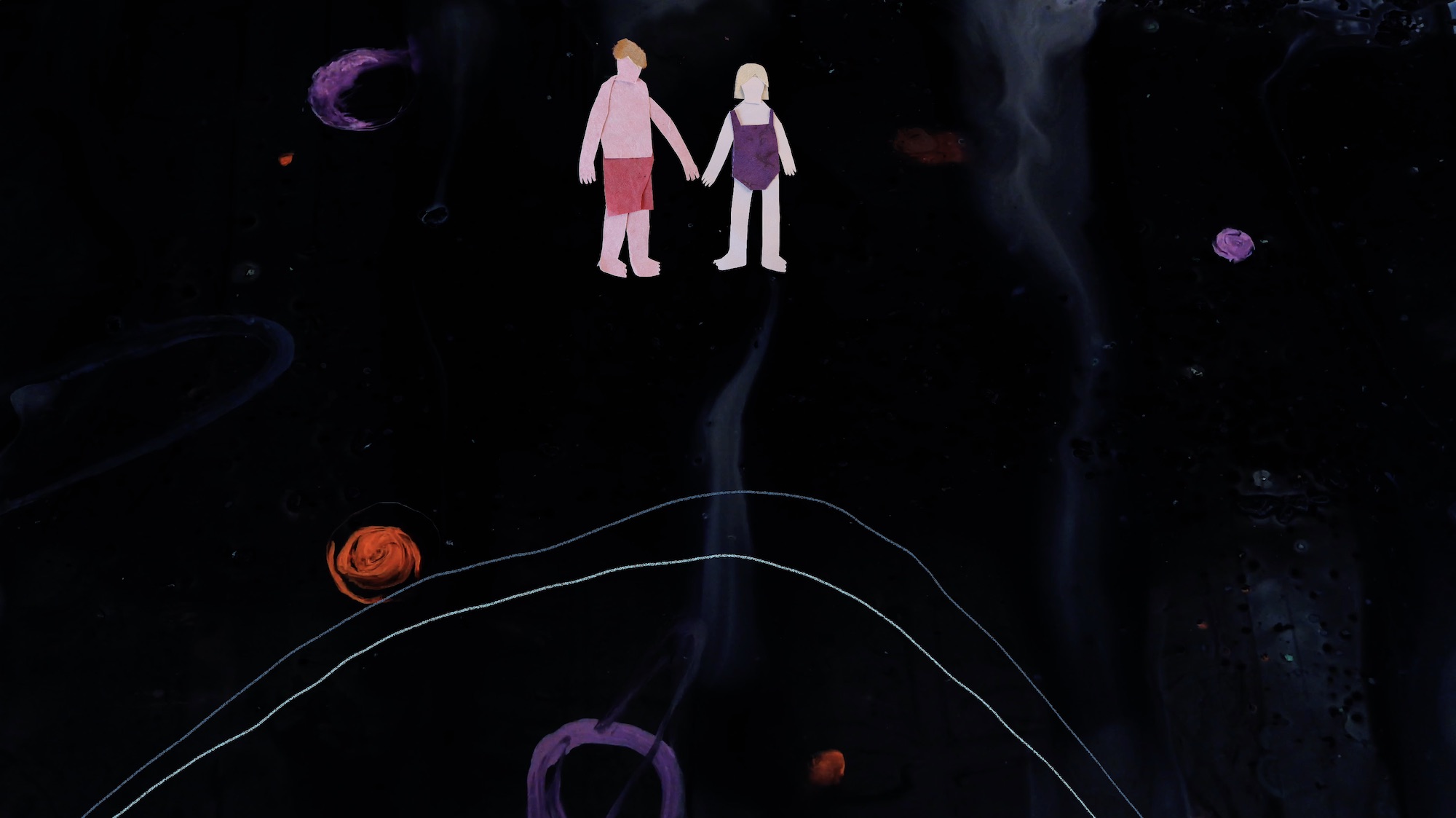
The one thing that really jumped out from your Directors Statement, was that you describe the film as a “love note to your wife”, can you explain a little about how eggshell pays homage to your partner?
I met my wife on a bus in Rome when I was in college. I can see the exact color of the sky that day. It was winter and it was a steel color. We were both lost in a big city. In fact, we’d come to discover that we were both quite lost in another sense as well. My parents had recently divorced and my relationship with my mother fell apart. My wife’s family had just experienced a tough trauma days before she got on the flight. We were young and trying hard to reconcile emotional pain.
Her open spirit and kindness inspire me endlessly.
We were raised in conservative cultures, so it was difficult for us to find strong role models with self-awareness when we were growing up. But we had each other. Someone to confide in and someone to trust. We developed a companionship that hasn’t wavered in 13 years. She’s the playful figure who trades lines with the protagonist in eggshell. Her snatches of dialogue stem from random moments, like her musing ‘what kind of animals we are.’ Those are the little jewels in my life that are very important to me. Her open spirit and kindness inspire me endlessly.
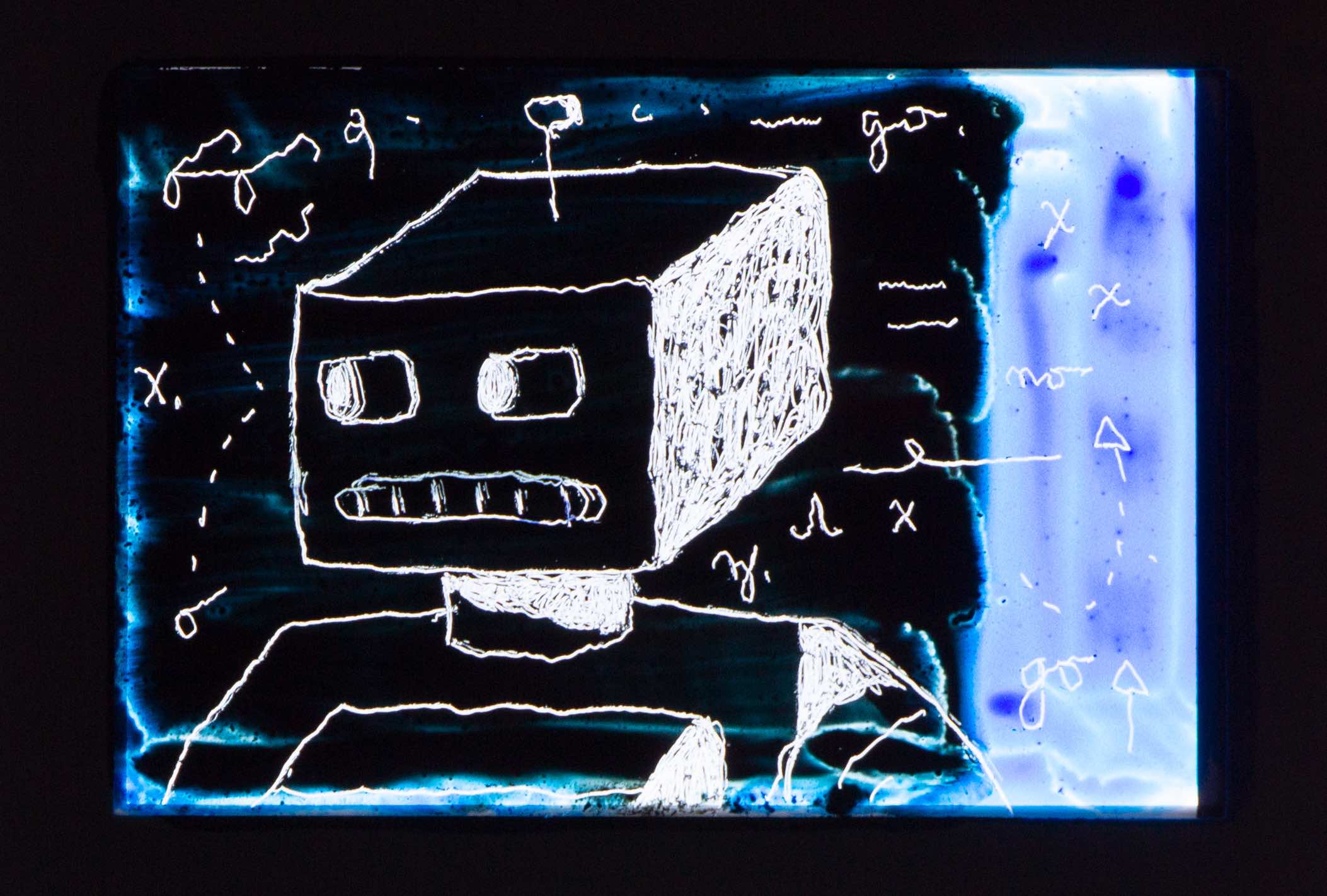

eggshell feels like a very personal piece, almost like making it was a therapeutic experience and you mention panic attacks and anxious moments in the film’s description. What was your motivation behind creating this piece and do you feel you completed what you set out to do with the film?
This piece began as an attempt to reconcile my feelings about playing competitive tennis as a kid. I was a 12 year old with a temper, so I’d emerge from matches emotionally taxed. It was all a bit much. I quickly hit a dead end with that film and the only physical remnants that made it into eggshell are small animations at the very end.
I stopped working on the piece and focused on another project. I started writing and thinking about my grandfather. I never met him, but he’s been a constant figure in my life, and he’s revered in my family. Relatives claim I look like him and joke like him. I believed I was a reincarnation of him when I was young. I took this to heart throughout my childhood and felt a deep sense of pride that I was a part of this man who influenced so many. As I grew older I found out things about him that I didn’t like so much. He wasn’t perfect like I thought. Perhaps we were not alike after all. He was the basis for the ghost that follows me around in the piece. An idea or a symbol that I can’t shake.
As I moved further into the film I realized it needed one more turn. The piece felt flawed because I was framing everything around a person I didn’t even know. It was missing a keystone to lock it into the type of structure I was looking for. Of course, the piece had to be about the one person I’ve been trying so damned hard to get to know over the past year – myself. I’ve been in therapy for the past year and a half, and to say it’s been an enlightening experience is an understatement.
eggshell served as a vehicle for my hands to enact what my brain was pushing and pulling around. I felt intense highs and lows making this piece, especially as it became a self-portrait. At times I could feel painful memories and emotions pouring straight out of me and leaving my body for good. At other times the process would tear me down so low that I questioned making art at all.
I was trying to say goodbye but I couldn’t even form words.
During one of these moments I had a vivid nightmare about a heart attack. I bolted awake and the dream wouldn’t leave. I thought I was dying and remember looking at my wife. I was trying to say goodbye but I couldn’t even form words. When my head cleared, the anxiety from that moment stayed with me in a very intense form for two days.
Shortly afterwards I suffered a bad concussion in a soccer game. It really exacerbated what I was already dealing with – I hallucinated and my ear made this popping sound for over a month. It was a pretty rough period. I’m in a much better place now, but the experience remained so palpable that I began making drawings about it. These emerged in one of the final passages of the film, where a dark shape moves and jitters toward the viewer.
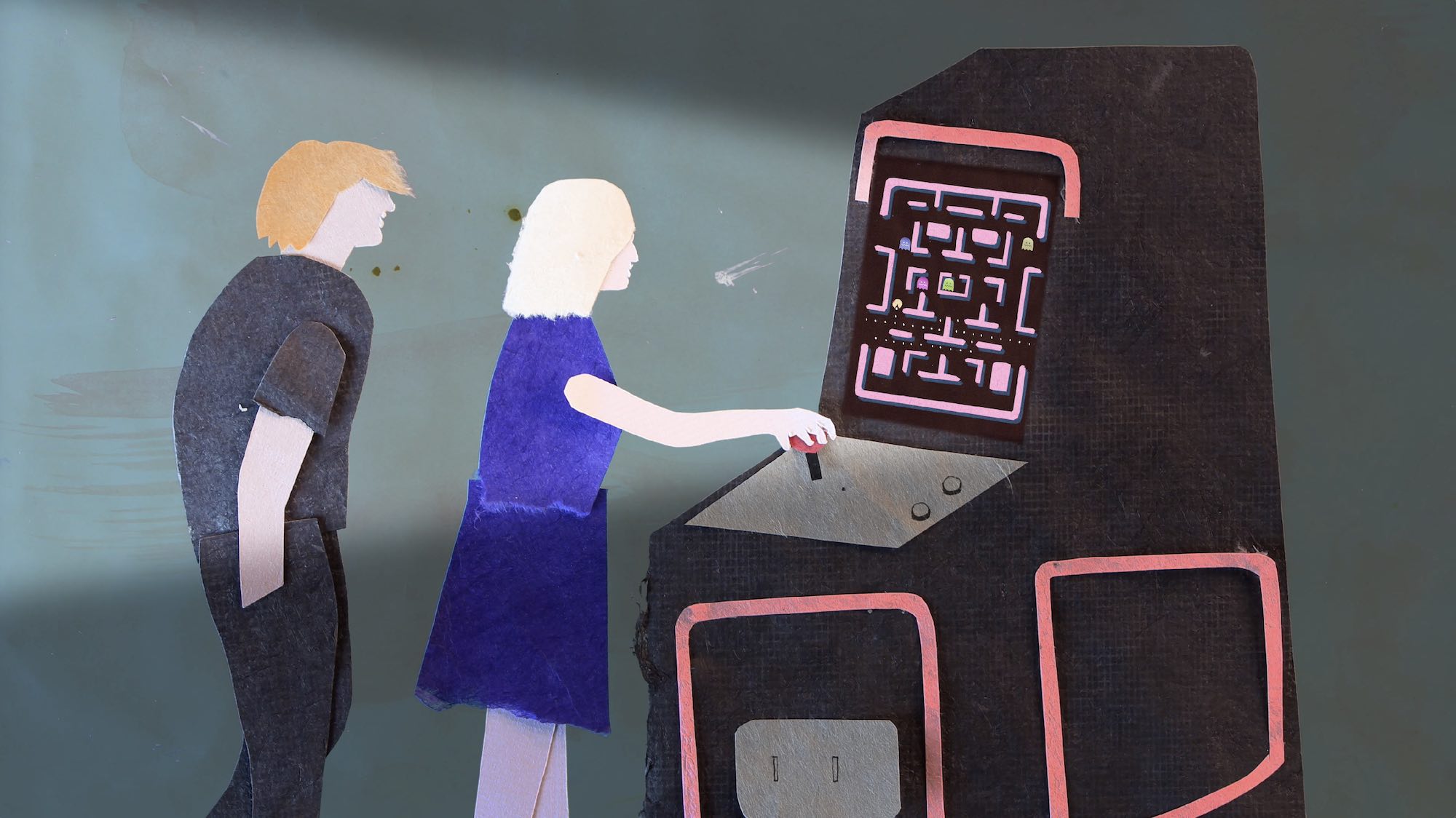
Nostalgia always seems to play a part in your work and Pac-man features heavily in this piece, was there a particular significance in including that arcade game in your film and what’s the draw to all things retro?
I love Pacman. When I was a kid, my brother and I crowded around a tabletop unit at a seafood restaurant my parents liked. We would play until they dragged us away. I didn’t think about Pacman at all for many years until I moved to New York in 2010. Cassandra and I would hang out at Barcade in Williamsburg. I was a young artist, back in school, trying hard to believe in myself and to deal with the chaos of the city. I had lived in small towns and the country for my entire life, so the intensity of New York felt like a punch in my stomach every day. Going to Barcade with my wife became a great release.
The symbolism of the ghosts endlessly chasing fit the film perfectly.
I remember long walks after drinking beer and playing games there. Walks through Williamsburg or across the bridge or to the tip of Greenpoint. My fondest memories of New York are those when I feel happy and safe enough to just walk indefinitely. Video games served as an escape for me as a kid, so small references inevitably find their way into my work, and the symbolism of the ghosts endlessly chasing fit the film perfectly.


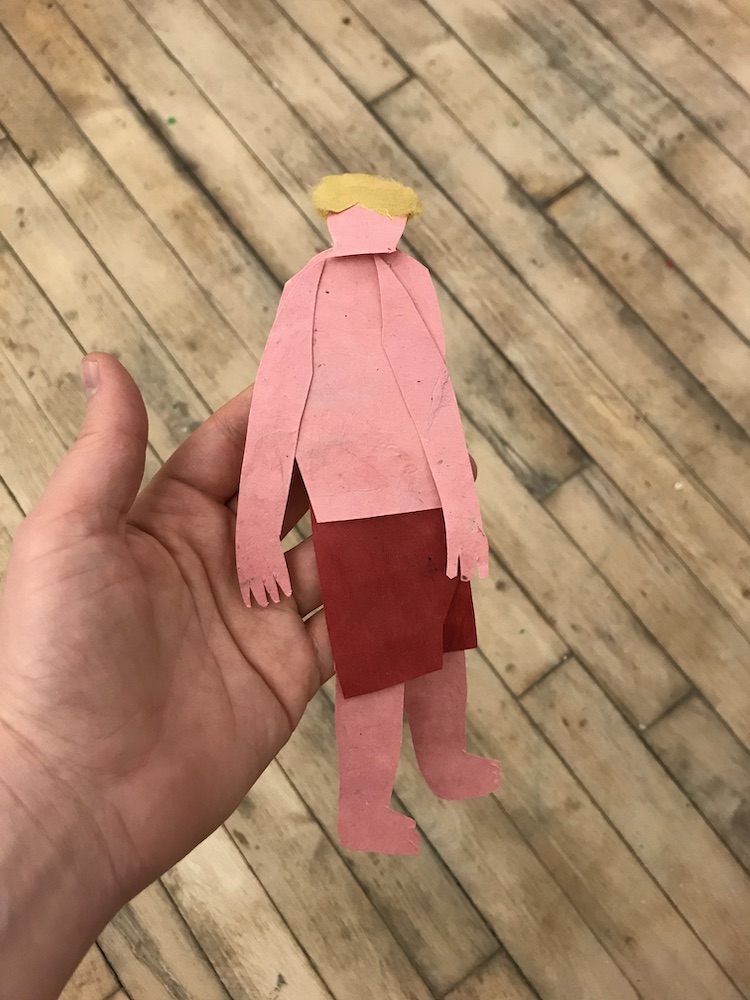
Like a lot of your work that I’ve seen, there’s a real tactile nature to the aesthetic of eggshell, what is it about this approach that appeals to you as a filmmaker?
I was trained as a painter. I made large, abstract oil paintings for many years on slabs of stained wood. I loved making those pieces, but I knew they were missing something. I was still too scared to put myself into the work fully. I didn’t know how. I remember one professor being so frustrated that I couldn’t be more direct, that I couldn’t tie the paintings to the stories about growing up in South Carolina that I spouted so easily.
When I started making films the process was liberating. I didn’t get hung up on rules or expectations with filmmaking. I expect some of this has to do with my lack of formal training. I had seen some animated works that really moved me – Rejected by Don Hertzfeldt and Eager by Allison Schulnik. The Future by my friend Alex Goddard used humor in a special way.
I understand things best by moving my hands over them.
I saw William Kentridge’s animations in a museum. I identified with their material choices and knew my work would exist in that space too, I just didn’t have the experience yet. I touch everything, papers, fibers, clothes, paints, inks – I understand things best by moving my hands over them. I hope my films feel this way too, that they have points and knobs and ridges and frayed edges, just like the objects we love in life – a favorite chair or a quilt. My favorite artists use the language of texture as another means of communication – another way to imbue work with personality and meaning. I think about The Harvesters, a painting by Peter Brueghel, almost every day.


It also feels like there are a lot of techniques used in creating eggshell, can you give us some insight into the production of the film – how long did it take, what tools/methods did you use?
Often I’ll mock up a character or shot but I won’t feel the jolt of excitement I’m looking for. I usually find that buzz comes from accidents or being lucky enough to ‘get outside’ of myself. To deskill myself so that I won’t be so tight or controlled while I’m working. Flipping things over or doing things backwards helps. I close my eyes alot. Or I’ll use mirrors or unusual lighting. Maybe inverting some color or changing the scale radically.
I’m interested in tying my movements and images together through seemingly disparate technical decisions. Like juxtaposing very flat paper figures next to dimensional sculptures and objects. Or using lines and paint that feel like they sit on the surface of the screen.
I have these odd shaped pill containers for my migraine meds – I used those as the rocket boosters that fall away from the small spaceship. The robot is composed of painted cereal boxes. The big strokes and blobs of paint are actual strokes of acrylic and gouache on big plastic sheets shot in stop-motion.
As for timing, I’ve been moving some of these ideas around for a couple of years, but I didn’t really sit down and start grinding away at it until August. I’ve worked on it pretty steadily since then, so it took about 6 months to make.
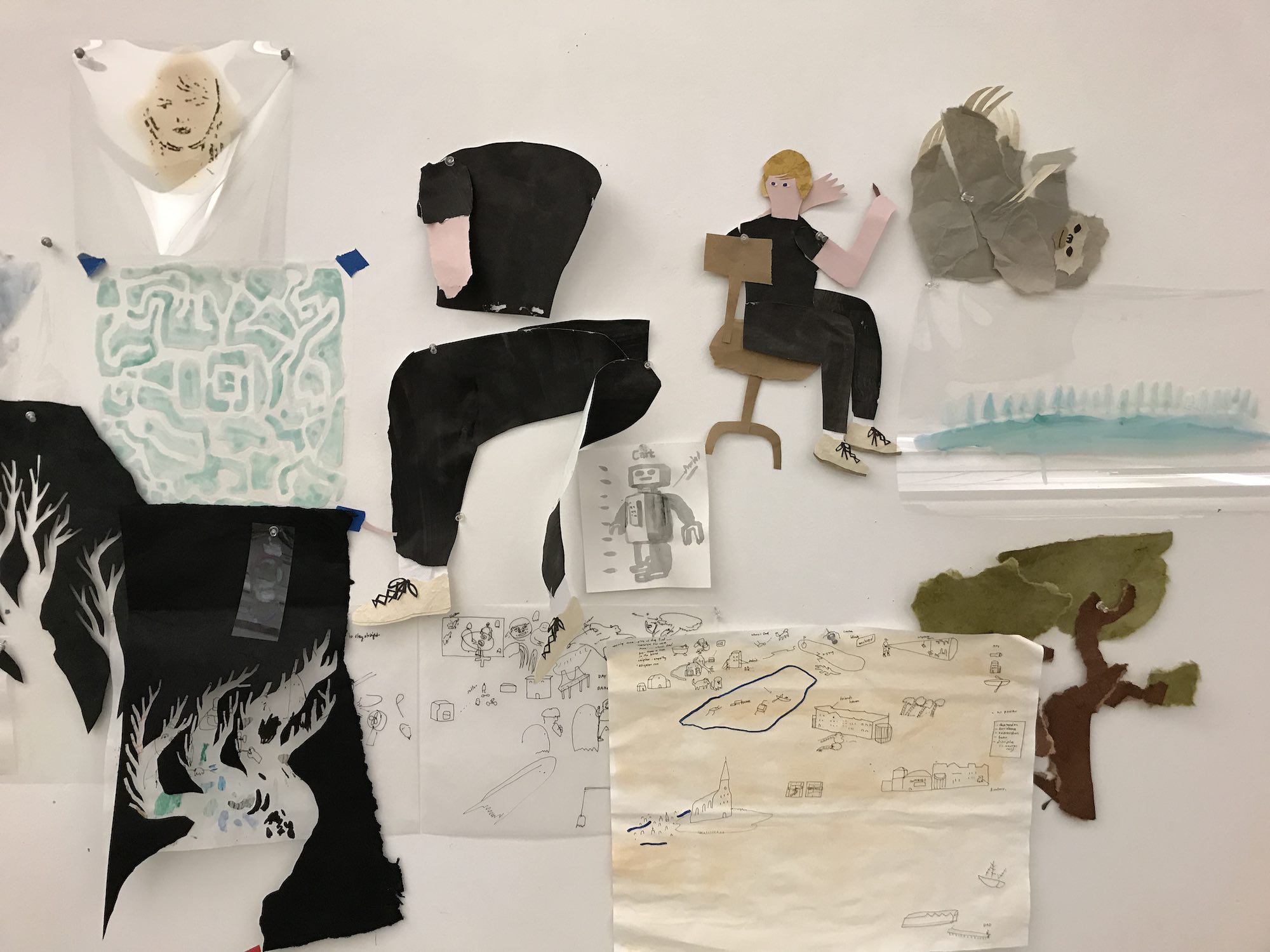
Having followed you on Vimeo for a while, you always come across as someone who is always creating, with that in mind, I’m eager to find out what you’re working on next?
I’m working on a few things right now. First I’m making a series of short films with Matthew Bate of Closer Films in Australia. We received a government grant to make six short films about soccer fans. We’ve been collaborating with pretty amazing folks like the inimitable writer Jonathan Wilson, and an Iranian protester named Sara who fights stadium bans against women in her country. I’m co-directing and making all of the artwork and animation.
I wrote a graphic novel based on some of the themes in eggshell.
Second, I’ve had the privilege of being an artist-in-residence at the Sharpe-Walentas studios in DUMBO for the past months. We have an open studio event in April where I’ll be debuting some new works alongside some great artists. They are drawings and paintings incorporated with my father’s old photographs, as well as lightbased pieces made from paper. Lastly, I wrote a graphic novel based on some of the themes in eggshell and have finished a decent chunk of concept art. Publishers, hit me up!
Finally, where should our readers go if they want to find out more about you and your work?
I have a website, www.casejernigan.com. But the best place is either my Vimeo page, or my two Instagram accounts, @wcjern and my soccer based account @off_foot. Thanks Rob!


